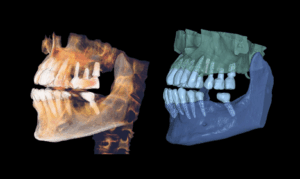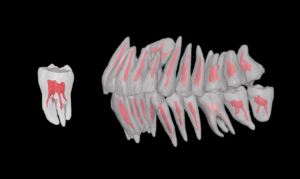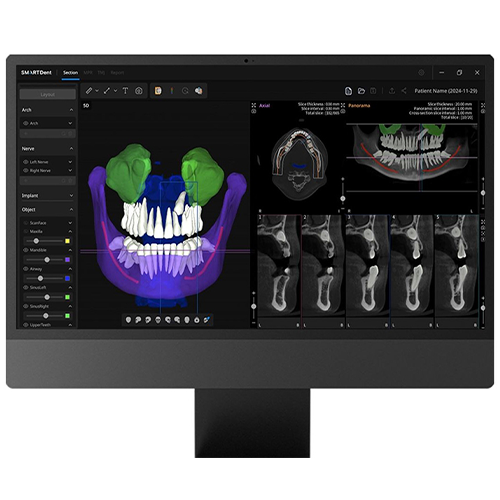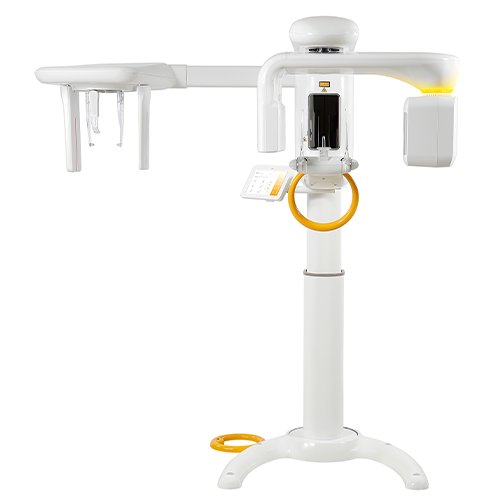Description
Effortless 5D Intelligent Technology
Intuitive visualization tool for accurate diagnosis and consultation
Anatomical Patient Models
The anatomical patient model automatically integrates facial scan data with CBCT data using 5D Intelligent alignment technology. This enables precise alignment of data and segmentation of CT anatomical structures in just two minutes.
Intelligent Auto Segmentation
Intelligent segmentation technology automatically identifies the teeth, mandible, maxilla, mandibular nerve canals, temporomandibular joints (TMJ), and airways to create accurate and intuitive anatomical patient models.

Intuitive 5D rendering for implant simulation
Traditional CBCT makes interpretation difficult and hinders implant placement assessment near adjacent roots. In contrast, 5D imaging provides clear visualization of adjacent teeth, the inferior alveolar nerve, and implant depth and angle, improving accuracy and efficiency in implant planning.
Enhanced quantitative implant simulation
Tracks nerve paths in 5D images with over 95% accuracy and automatically analyzes sinus features and graft materials, minimizing nerve damage risk and streamlining surgical planning to improve implant success rates.
5D visualization for orthodontic treatment
Through 5D visualization, impacted teeth, supernumerary teeth, and root dilacerations can be analyzed to create more accurate treatment plans. This allows for better communication with patients and enables personalized facial aesthetic treatments.
 Intuitive and precise root canal analysis
Intuitive and precise root canal analysis
5D visualization provides detailed analysis of pulp and root canal anatomy, reducing missed canals and procedural errors while optimizing treatment outcomes.
Patient-tailored aesthetic diagnosis
5D visualization technology allows patients to better understand their oral condition and predict aesthetic treatment outcomes, enabling smoother consultations.
Enhanced patient communication
The Slider explorer feature, which displays 5D volumetric and MPR images simultaneously, enhances visual clarity, improving patient understanding and increasing case acceptance rates.




 Intuitive and precise root canal analysis
Intuitive and precise root canal analysis